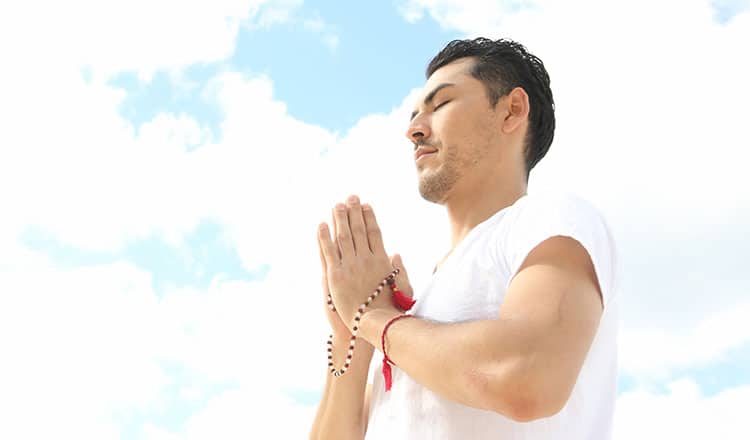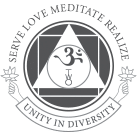Sivananda Bahamas Blog
Expand Your Horizons …
Our Blog
Introduction to Meditation
We’re all conditioned to look on the outside for happiness, whether it’s relaxing in a hammock or indulging in a slice of chocolate cake. But how long can you lie in a hammock? And think about the cake: one slice is great, maybe two, even three. But five slices? We might be happy in the moment, but not if we get too much of most things.
That’s not the case with meditation. By looking inside, stilling the mind and focusing on our mantra for a prolonged period, we discover peace and the ability to concentrate. And our experience only gets better. Like sleep, serious meditation cannot be taught and it takes years to understand its nature, says Pranava, teacher and senior staff at the Sivananda Ashram Yoga Retreat in the Bahamas.
Nevertheless, proper conditions can facilitate the practice. “It’s a daily habit and you must make a commitment, five minutes every day,” he says. “There’s no valid excuse for not getting up five minutes earlier. It’s the best decision you will ever make.”
Swami Sivananda says meditation is “the only royal road to the attainment of freedom,” the culmination of the Five Points of Yoga: proper breathing, exercise, relaxation, diet, positive thinking, and meditation. The practice, Pranava says, will lead from pain to bliss.
First, the meditation posture, sitting in a cross-legged position with spine and neck held erect but not tense. “Energy has to flow through the spine,” he says. In the stillness of meditation, the mind is connected to the breath and the breath connected to the body.
At the beginning it’s physical, he says, a struggle. But keep the eyes closed and if your legs hurt in the crossed-legged position, stretch them out. “In yoga we say, ‘no pain, no pain.’ Don’t put too much pressure on your knees, use towels to bolster,” Pranava says.
Relaxing the breath is critical to the practice. By controlling the breath, you control the mind, he says, and advises deep inhalations and exhalations, three seconds each, to bring energy to the brain. Rhythmic breathing helps coordinate with the mantra.
Meditation is getting in touch with the divine within through a steady continuous flow of attention held for a prolonged time. And to do it, you need a mantra, described as an energy encapsulated sound. The original or universal mantra is Om, considered the sound of creation, the sound from which all other sounds emerge. “When you meditate, you contemplate the meaning of this mantra, which is universal light, an endless ocean of pure light,” he says.
Concentration is a key beginning to the practice of meditation, fixing the mind on one point. But you must deal with the main obstacle — all the thoughts running through your head. “It’s hard to still the mind in meditation,” Pranava says. “The yogis tell us that there can be only one single thought in your mind at the same time, so one way to do that is to focus on one specific object, as a concentration exercise. It helps slow down thought waves and prevents the mind from jumping around.”
He cites the Zen proverb: “When walking walk. When eating eat.”
Meditate at dawn or dusk, although Pranava suggests the early morning, if possible, when the mind is clear and more open to concentration. If possible, meditate in a separate room or a separate section of a quiet room, with incense burning and a focal point of a statue or photograph.
Reserve a spot for your meditation, practice daily and it will become joyful, Pranava says. “The mind is like a garden, Swami Sivananda said. Leave it unattended and weeds will grow. You have to go to the garden every day, take out the weeds, plant seeds, remove obstacles. You can begin by five minutes at home and, according to Swami Sivananda, increase your practice by one minute per week.”
There’s a trick to meditation, Pranava says. “If you really love the object of your meditation, your mind naturally follows. It’s incredible bliss and happiness. Then meditation becomes easy. And never lose a day of meditation. Once you taste a drop of bliss, you will always want to go there.”









One thought on “Introduction to Meditation”
William Arendtz
I first became aware of Sally Kempton on her Gaia series.
I’m in search of a meditation program. A how to Instructional Meditation 101 approach.
I have ” NO ” past experience on how to meditate.
I would prefer a class type setting or Retreat type atmosphere and not an Internet based program.
The program would be for my wife and I.
Long story short…I’m in search of a program that introduces (The 2 of us) the basics for establishing a Meditation program that the 2 of us can enjoy. Neither of us have a clue on how/where to begin…